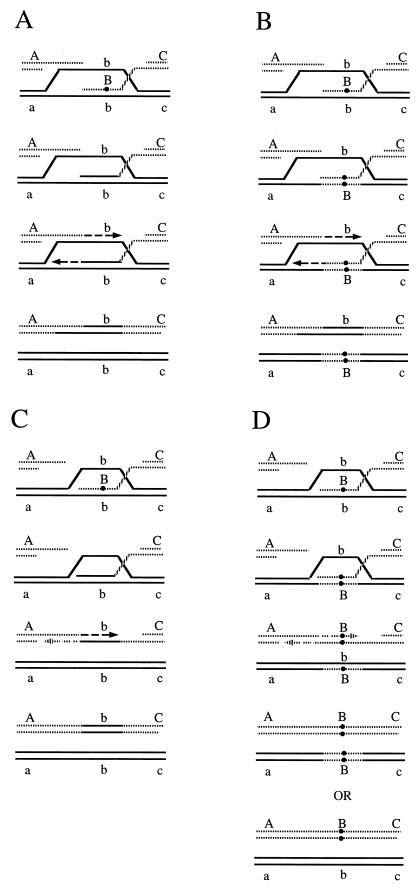FIG. 17.
Correction of hDNA resulting from strand invasion. (A) In the Szostak et al. (479, 494) model, correction in favor of the recipient strand leads to a gene conversion. (B) In the Szostak et al. (479, 494) model, correction in favor of the invading strand leads to a restoration at the B locus. Therefore, if one looks only at the B locus, nothing is detectable (normal Mendelian segregation). However, b is now associated with A and C, and B is associated with a and c (apparent double crossover). (C) In an SDSA model, correction in favor of the recipient strand results in a gene conversion. (D) In an SDSA model, correction in favor of the invading strand leads to a second round of mismatch repair that is initiated when the two strands of the template are reassociated. The final outcome can be gene conversion (genetic definition) or no detectable event (even no apparent double crossover). This outcome will be found with the SDSA models described in Fig. 8B, to D. In the SDSA model described in Fig. 8A, where a second strand is synthesized on the template, an additional mismatch will appear when the two newly synthesized strands are annealed (not shown). Four outcomes are then possible (no apparent event, apparent double crossover, gene conversion of B, gene conversion of b).

